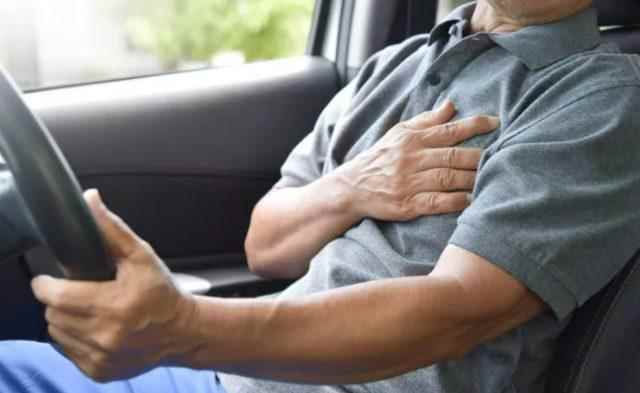The changing conditions due to the pandemic have enabled us to run business and school from home. This process, which was quite enjoyable at first, started to threaten our health. Many workplaces have now switched to working from home. Sitting sedentary for hours at home has begun to increase the risks of disease. Noting that increasing inactivity today also increases the risk of death, Prof. Dr. Bilal Boztosun, “Studies have shown that those who sit more than 13 hours a day have a 2 times higher risk of death than those who sit less than 11 hours a day. Sitting for long periods of time can cause type 2 diabetes and obesity, two risk factors for heart disease. When you sit for a long time regularly, your bones weaken and your entire skeletal system may experience negative effects such as pain and inflammation.
EVERYONE NEEDS PHYSICAL ACTIVITY
prof. Dr. Bilal Boztosun pointed out that long-term sitting is a risk factor for premature death. prof. Dr. Bilal Boztosun stated that everyone needs muscle-strengthening physical activity and said, “People who sit for a long time need both aerobic and muscle-strengthening physical activity. A study published in an international journal has shown evidence that prolonged sitting is a risk factor for premature death. Studies show that the more you sit, the greater your risk of premature death. As an example of the studies carried out; It has been shown that participants who sit more than 13 hours a day have a 2 times higher risk of death than those who sit less than 11 hours. It has been observed that people who move more and sit less (sitting less than 30 minutes at a time) have a 55 percent lower risk than those who sit for 30 minutes or more at a time. “People who sit for more than 90 minutes at a time are nearly twice as likely to die than those who always limit their sitting to less than 90 minutes.”
CAP CRISIS AND RISK OF POLICE INCREASED 147 PERCENT

Mentioning that today’s adults and adolescents do not have sufficient physical activity level, Prof. Dr. Bilal Boztosun continued as follows: “Unfortunately, one in four adults and more than 80 percent of adolescents do not meet the recommended physical activity levels. The study, which evaluated about 800,000 participants, showed that those who sat the most had an increase in morbidity and mortality rates compared to those who sat the least. According to statistics, those who sit a lot have a 112 percent increased risk of diabetes, and a 147 percent increase in cardiovascular events such as heart attacks and strokes. There was a 90 percent increase in death from cardiovascular events. There was a 49 percent increase in death from any cause. When too much time is spent sitting, blood flow slows down, which allows fatty acids to build up in blood vessels and can lead to heart disease. Your body’s ability to process fat is reduced. Lipoprotein lipase is an important enzyme produced to break down fat in your belly. When you sit, your body’s production of lipoprotein lipase drops by about 90 percent, making it easier for your body to use fat, and when not, fat is stored. Sitting for long periods of time can lead to insulin resistance, which can lead to type 2 diabetes and obesity, which are two risk factors for heart disease. When you sit regularly for long periods of time, your bones weaken and your entire skeletal system can experience adverse effects, including pain, bony spurs, inflammation and other symptoms. When you don’t use your muscles, they can lose their strength and ability to support other body systems. It can affect your brain. In cancer, taking the recommended amount of exercise can reduce the risk of many cancers, including breast, colon and uterine cancers. Moving more and sitting less has tremendous benefits for everyone, regardless of age, gender, race, ethnicity or current fitness level.”
Take a break on long car rides

prof. Dr. Boztosun gave the following advice on exercise and physical activity: “Exercise triggers the production of brain-derived neurotrophic factor (BDNF), which grows neurons in the brain. It also helps fight the effects of cortisol, the stress hormone. Therefore, when BDNF sources decrease, cortisol increases, which leads to increased stress. Blood flow to the brain also slows down when you’re sedentary, which reduces the amount of oxygen your brain receives. Not every person has the same opportunity to be physically active. Many people live in neighborhoods with poor sidewalk and street infrastructure, few safe spaces for physical activity, and no means of walking or cycling from their homes. Being on social platforms that increase physical activity can provide safe and convenient places for people to be active. Prefer to use the stairs instead of the elevator. We need to ensure that our young people are more active, especially in schools. We need to look for solutions for children to move more. You can try walking or cycling to school. Plan for after-school activities like outdoor games. It is important to make the streets safe so that people of all ages and abilities can walk, cycle, use a wheelchair or take public transport. Transport planning that connects active transport and public transport should be supported. In the evening, play active family games such as soccer or roller skating instead of video games on the television screen. Don’t forget to take a break on long car journeys.”
